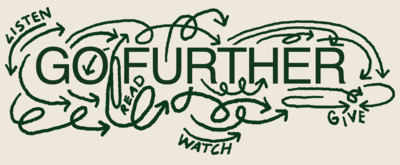You’d think we would be naturals at knowing what to eat, given our actual physical survival depends on it.
But a lot of people find it really confusing. And who can blame them? One newsflash contradicts the next (see: the “is butter back?” debate). And there’s so much finger-wagging about what we shouldn’t eat. We’re told to cut gluten. Dairy. Grains. Nightshade vegetables.
Only, most of what we’re hearing is wrong. And platforms like Facebook and Twitter have compounded the problem. “Bad science found a good home on social media,” says Amanda Bontempo, RD, a registered dietitian in oncology nutrition at NYU Langone. So what does good nourishment mean in 2021? There’s a simple scientific consensus: Eat more plants (veggies, fruits, grains, legumes, nuts, olive oil). Even if you keep meat in the mix, a plant-rich diet—especially one supplemented with fish—brings healthy benefits and may help you live longer.

Believe it or not, the concept of nutrition is fairly new. The first vitamin was identified less than a century ago. Much of the research into nutrition as a way to avoid disease happened in the past 40 years.
While there’s still a lot to learn about how food affects our health, this much is clear: We’re biologically built to thrive on a plant-rich mix. “Humans are constitutional omnivores,” says David Katz, MD, the founding director of Yale-Griffin Prevention Research Center. (Omnivores, you remember from high school biology, eat plants and animals.) “But when you look at our anatomy and physiology, our grinding molars and our longer digestive tracts, we’re closer to the herbivore end of the spectrum. We can thrive on a diet that’s all plants, but we can’t on a diet that’s all meat without subjecting ourselves to nutritional deficiencies.”
In other words, we thrive on a mix of foods—but not the mix we’re getting. “We went from getting food directly from nature to glow-in-the-dark Frankenfood as our cultural norm,” Dr. Katz says. (And if you want to read more about how the packaged food industry messes with you, check out Hooked: Food, Free Will and How the Food Giants Exploit Our Addictions.)

We could go into the nutrition science weeds, but it really comes down to plant foods giving us two key things: phytonutrients and fiber.
Phytonutrients are antioxidants in the skins of fruits and veggies that give them their color. They help prevent damage to cells (which can contribute to cancer) and have an anti-inflammatory effect. You’ll get the most benefit if you eat a bright range of produce, skins on when possible. The skins of green fruits and veggies have an anti-cancer effect, while orange, yellow, and red can help prevent heart disease, according to a large international study.
As for fiber, we’ve underestimated its importance for years. Fiber is found in all kinds of plant foods—fruits and vegetables, grains, nuts, legumes. It helps to lower blood sugar and cholesterol. And people who get the most from whole grains in particular have a lower risk of dying of cancer and heart disease, research shows.
Fiber also feeds the good bacteria in our gut microbiome, and that’s key because a healthy mix of bugs helps stave off everything from anxiety to heart disease. “Highly processed foods are either devoid of fiber or very low in it, and animal products contain zero fiber,” says Jillian Nussinow, RD, a culinary educator and dietitian.

Again and again, researchers find a traditional Western diet (processed with a lot of red meat and added sugar) is linked to a higher risk of heart disease, stroke, and other health problems, while a plant-focused diet lowers the chances of type 2 diabetes, heart disease, and breast and colon cancers.
Beyond plants, a healthy plate should include a small portion of lean protein (whether plant protein like soy or quinoa, or animal like fish or chicken). Protein is critical for our immune system, healthy muscles and bones, and balancing fluids. We also need heart-protective fats (from plants or seafood). And healthy carbs belong in your daily mix because they are the body’s main source of fuel. Experts say to choose the ones that come from produce and grains—not from a cracker sleeve.

Food impacts our emotional state, too. (And not just the smug self-satisfaction you get after eating a chopped kale power salad with no dressing.) Did you know 95% of the mood-stabilizing hormone serotonin is created in our digestive tract? “Your gut and your brain communicate,” says Nussinow. “If something is wrong in your gut, the signals to your brain won’t work as well.”
Those millions of nerve cells in your gut have the very important job of producing feel-good neurotransmitters, and their proper functioning relies on what we feed them. It’s a reason why people who eat a plant- and fish-rich, unprocessed Mediterranean- or Japanese-style diet have a 25% to 35% lower risk of depression than those who live on traditional Western fare with lots of refined sugar and animal fats.

How we eat can sometimes be as important as what we eat. The Slow Food movement started in Italy in the 1980’s as a revolt against fast food and the loss of cultural and regional food traditions. This now-global movement is all about putting pleasure and community back in eating.
Along similar lines, intuitive eating urges us to “eat with attention and intention,” explains Michelle May, MD, creator of the Am I Hungry? program. Intuitive eating’s mindful approach—originally started by a therapist in the ’90s–encourages people to reject diet culture and instead trust their own internal hunger cues.
But many of us mindlessly inhale meals and munchies at our desk rather than thinking about our fare as fuel or a means of connection. One way to counter this: Any time you want to eat, ask yourself, “Am I physically hungry?” If the answer is no, you likely need something else (to drop into a down dog, hear a friend’s voice) and you’ll be more satisfied with that than the snack.
Word of the week: “Hara hachi bu”—A Japanese practice that encourages people to stop eating when they feel 80% full. Being satisfied but not stuffed is the end game.

The goal is to have veggies and fruit take up more and more of your plate while meat takes up less. No need to follow a particular eating style (though a Mediterranean one has a slew of good research behind it). “If you take the 10 healthiest diets out there, they all have the same foundation, which is eating plants,” says Bontempo. “They’re more alike than they are not.”

Climatarian
This movement is about choosing foods based on their carbon footprint and eco impact. (Why that matters: Food production causes 30% of global greenhouse gas emissions, according to the Harvard T.H. Chan School of Public Health.) Climatarians prioritize local foods and in-season produce. Attitudes toward meat run the gamut—some climatarians eat chicken and lamb, others avoid beef from factory farms, while still others are strict vegetarians.
- Pro: From a nutrition angle, eating local fruits and veggies means you’re getting them sooner after they were picked, when more of their nutrients are intact. And there’s good reason to avoid farmed meat that is pumped up with antibiotics, since the practice is linked to a rise in antibiotic-resistant superbugs.
- Con: The jury is still out on how effective this can be for the planet, but (given the generally higher price of sustainably sourced meat) it could take a toll on your wallet.
Nutrigenetics
This is a new field—also known as precision nutrition—that examines how your DNA could determine the right nutrition for you.
- Pro: There’s potential: The related but distinct field of nutrigenomics—which studies nutrition and gene expression—is a legitimate area of science and could one day inform nutrigenetics.
- Con: The science for nutrigenetics is “absolutely not there yet,” Bontempo says. So be wary of programs that promise a perfect personalized diet based on a saliva swab.

Make it without meat
The best way to introduce a lifestyle shift is incrementally. Each week try to incorporate at least one meatless meal. Need a little inspiration? We asked L.A. veggie-centric restaurant Botanica to whip up an exclusive recipe just for Prism and, boy, did they deliver. Follow these easy instructions to make this truly delicious springtime pea tartine.
Put your fork down.
“It’s not part of your hand,” Nussinow says. Simply putting down your utensil between each bite will help you fully take in the taste, smell, and texture of your meals.
Eat what you really like.
In our diet-driven culture, we lose touch with eating for pleasure—which could be why we’re low-level famished all the time. But intuitive eating involves reconnecting to your tastes and hunger. Try asking yourself: What do I really want? And what makes me feel great after eating it? Hot sauce drizzled on my omelette? A grass-fed burger with caramelized onions? Steamed artichokes with dinner instead of the usual nuked spinach side? So good.

LISTEN
If you’re having trouble transitioning to intuitive eating, this episode of the Food Heaven podcast will help you troubleshoot.
READ
Still not convinced unprocessed is the way to go? Dig into the new book Metabolical: The Truth About Processed Food and How It Poisons People and the Planet by Robert Lustig, MD.
WATCH
If all this talk of plant-based diets has gotten you thinking about growing some of your own, check out the Instagram of urban farmer Justin Gay for beginner’s tips on what and how to grow.
GIVE
All communities deserve access to fresh food. Donating to Soul Fire Farm, an Afro-Indigenous farm in Los Angeles, puts fruits and vegetables in the hands of more people.

Prism Postcards takes the cringe out of wellness. It’s smart, inclusive, and funny. Sign up and get it delivered to your inbox every other week.

